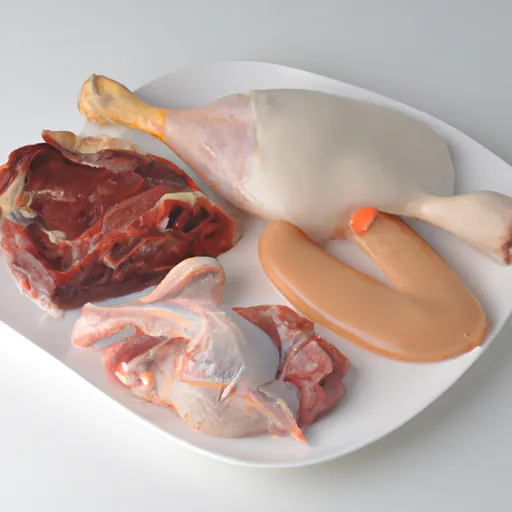How to Create a Balanced Plate for Optimal Health
Creating a balanced plate is essential for optimal health and well-being. By incorporating a variety of nutrients from different food groups, you can ensure that your body is getting all the essential vitamins and minerals it needs to function at its best. In this article, we will discuss how to create a balanced plate that promotes overall health and vitality.
1. Fill Half Your Plate with Fruits and Vegetables
One of the most important aspects of creating a balanced plate is to fill half of your plate with fruits and vegetables. These foods are rich in vitamins, minerals, and antioxidants that are essential for good health. Aim to include a variety of colors to ensure that you are getting a wide range of nutrients.
2. Include Lean Proteins
Read also: Healthy Buffet Dining: Smart Food Choices for Optimal Health
Proteins are the building blocks of our bodies and are essential for muscle growth and repair. When creating a balanced plate, be sure to include lean proteins such as chicken, fish, tofu, or beans. These foods are low in saturated fats and provide a good source of essential amino acids.
3. Add Whole Grains
Whole grains are an important source of fiber, which is essential for digestive health and can help to reduce the risk of chronic diseases such as heart disease and diabetes. When creating a balanced plate, be sure to include whole grains such as brown rice, quinoa, or whole wheat bread.
4. Don’t Forget Healthy Fats
Read also: Improve Sleep: Relaxing Bedtime Rituals for Better Rest
Healthy fats are essential for brain health, hormone production, and overall well-being. Include sources of healthy fats such as avocados, nuts, seeds, and olive oil in your meals to ensure that you are getting all the essential nutrients your body needs.
5. Limit Processed Foods and Sugary Drinks
Processed foods and sugary drinks are often high in unhealthy fats, sugars, and additives that can be detrimental to your health. When creating a balanced plate, try to limit the amount of processed foods and sugary drinks you consume and opt for whole, unprocessed foods instead.
By following these simple tips, you can create a balanced plate that promotes optimal health and well-being. Remember to fill half your plate with fruits and vegetables, include lean proteins, add whole grains, incorporate healthy fats, and limit processed foods and sugary drinks. By making these small changes to your diet, you can improve your overall health and feel your best every day.
| Food Group | Examples |
|---|---|
| Fruits and Vegetables | Apples, spinach, carrots |
| Lean Proteins | Chicken, fish, tofu |
| Whole Grains | Brown rice, quinoa, whole wheat bread |
| Healthy Fats | Avocados, nuts, olive oil |
Questions and answers
What is the importance of creating a balanced plate for optimal health?
Creating a balanced plate is crucial for optimal health because it ensures that you are getting a variety of nutrients that your body needs to function properly. By incorporating a mix of carbohydrates, proteins, healthy fats, and fruits and vegetables, you can support your overall well-being and maintain a healthy weight.
How can I create a balanced plate?
To create a balanced plate, aim to fill half of your plate with fruits and vegetables, a quarter with lean proteins, and a quarter with whole grains. Additionally, include a small serving of healthy fats, such as avocado or nuts, to round out your meal. It’s also important to pay attention to portion sizes and listen to your body’s hunger and fullness cues.
What are some examples of balanced meals?
An example of a balanced meal could be grilled chicken breast with quinoa, roasted vegetables, and a side salad with a vinaigrette dressing. Another example could be a tofu stir-fry with brown rice, broccoli, and sliced almonds. By combining different food groups in each meal, you can create a well-rounded and nutritious plate.

